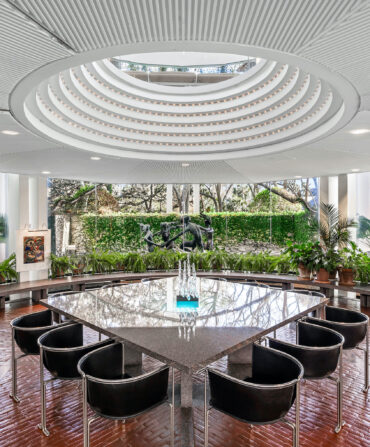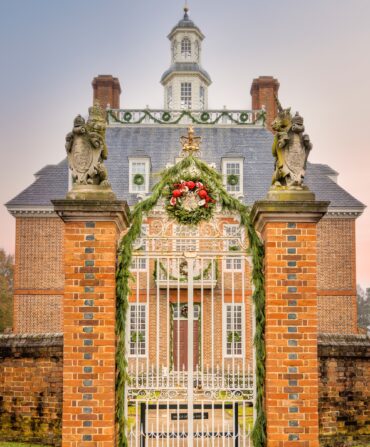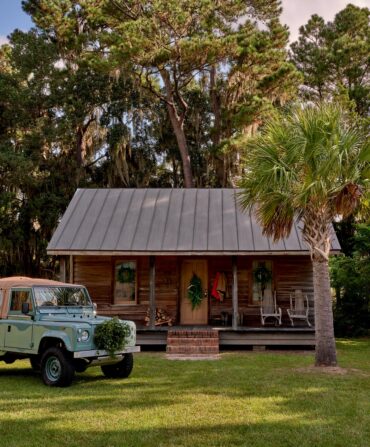Home & Garden
Step into the G&G Style Director’s House Romantic
A gorgeous new book from Haskell Harris will delight interior-design lovers

Photo: Charlotte Zacharkiw (2)
Haskell Harris in the living room of her former home in Charleston, South Carolina.
Meaning, comfort, authenticity, flair, nature, and soul—to Garden & Gun’s longtime style director, Haskell Harris, these elements make a house a home, and a lover of homes a “house romantic.” Or, as she puts it, the title of her new book, The House Romantic, out from Abrams on March 19, describes those who are “just a little bit nuts about houses.”
Anyone who’s met Harris knows that that describes her to a T. “My parents were just a little weird, how much they were obsessed with houses,” she says with a laugh. “I was always around grown-ups working on houses, thinking about houses, talking about houses, talking about gardens. It was in my DNA.”
After stints at Southern Living and Cottage Living, Harris joined Garden & Gun in 2008 and set about helping infuse the magazine with homes, gardens, and products that were not only beautiful but had great stories behind them. In The House Romantic, she expands on that theme, visiting “kindred spirits” in the art and interiors world with jubilant, gorgeous, story-filled homes, from Anna Spiro in Elsternwick, Australia; to Lizzie Green in London, England; to Sheila Bridges in Livingston, New York; to Southerners aplenty, including her fellow Charleston, South Carolina, residents Angie Hranowsky and Kate Towill. Each chapter also includes a “Story Behind the Stuff” jaunt to the studio of an artist or a purveyor—of antique quilts, glassware, linens, and more.

Photo: Charlotte Zacharkiw
The dining room at Harris’s former home.
“In this whole deluge that we’re currently experiencing with influencers, and images on Instagram, and TikTok decoration—sometimes there’s a real lack of a point of view of the person who’s living there and a lack of storytelling about the layers in that space,” Harris says. “Instead, it’s that immediate gratification of the overall look of a room. I’m always more interested in taking apart the layers and getting to know the person and the designers behind it.”
And while each person featured in The House Romantic imbues her space with a distinct style, common themes repeat: a welcoming warmth, walls and tables filled with pieces that speak to a personal history, and a compelling use of colors and patterns that indicate that for these women, a measured “maximalism” is not a trend but a way of life.
Being bold in your own home “really does start with a palette,” Harris advises. “A color story that you really, really love that weaves in and out of all the rooms. That gives you some structure to hang the wilder things on, like multiple patterns and textures, that makes it a little more organized visually.”
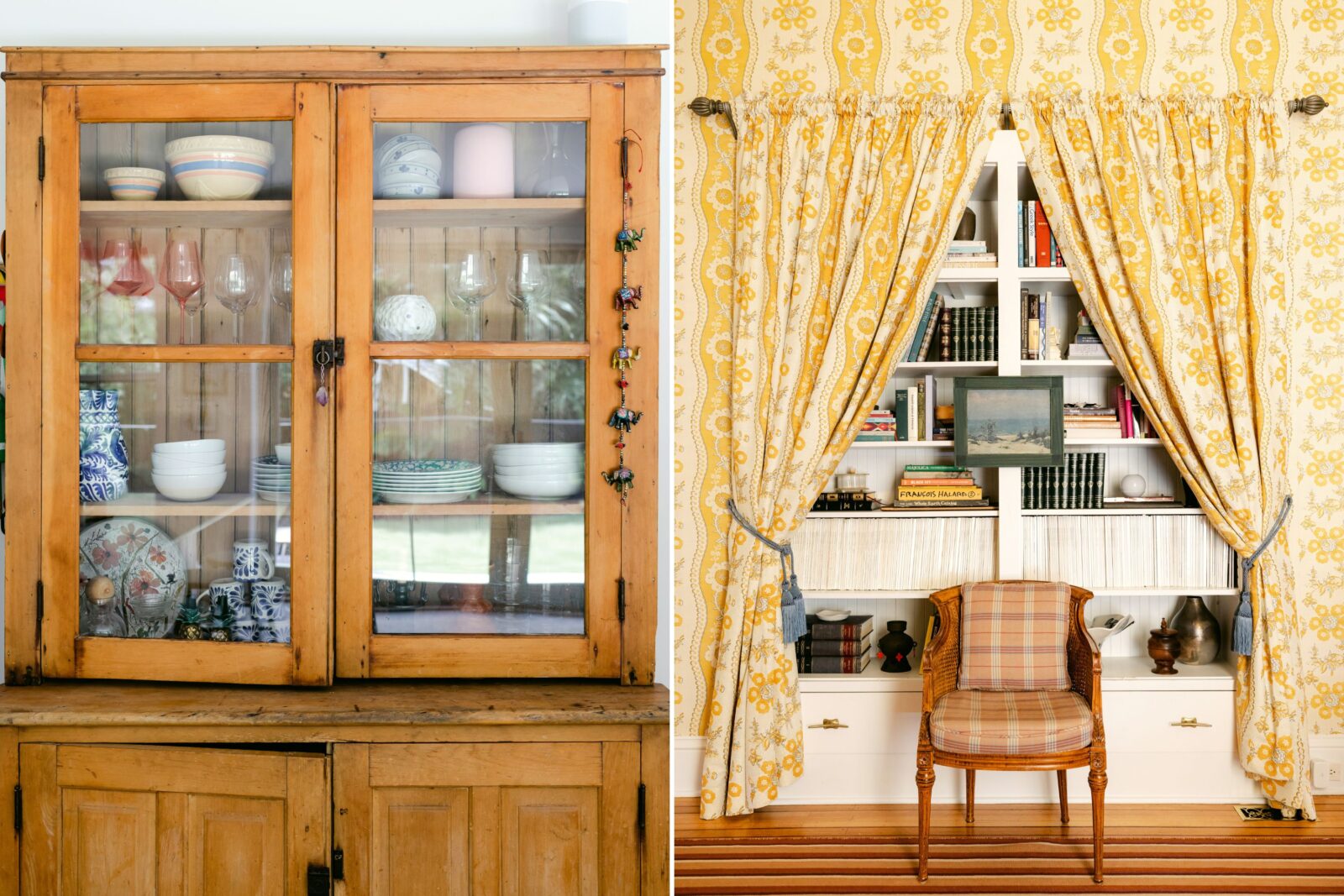
Photo: Charlotte Zacharkiw
Kate Towill’s weathered sideboard recalls a childhood piece; drapery panels embellish the bookshelves in interior designer Victoria Sass’s Minneapolis office.
Harris shares more of these ideas and tips through her own house stories, opening each chapter with “At Home with Haskell,” a reflection on what those aforementioned “house romantic” elements—which also serve as her chapter titles—mean to her and how they played out at her former home in Charleston. How she layered meaning into a dining room by anchoring it with a childhood farm table, for instance, and how she added flair to a dark hallway by decoupaging the entire space with blue-and-white marbled-paper table runners.
But sometimes life requires homeowners to be bold in other ways—to face losing a home, as Harris has over the years, to a fire, to a career change, to a divorce. The end of the book finds her starting afresh on Johns Island, near Charleston. “For readers, and obviously for my son, Wiley, I wanted them to come away from this book with the idea that you can make it through hard things like losing a house and carry it with you to the next,” she explains. “And I really wanted to create a scrapbook for my little boy—to record all the things we did with him sitting at my feet or out in the garden. He was very much a part of it all, even though he was little.”
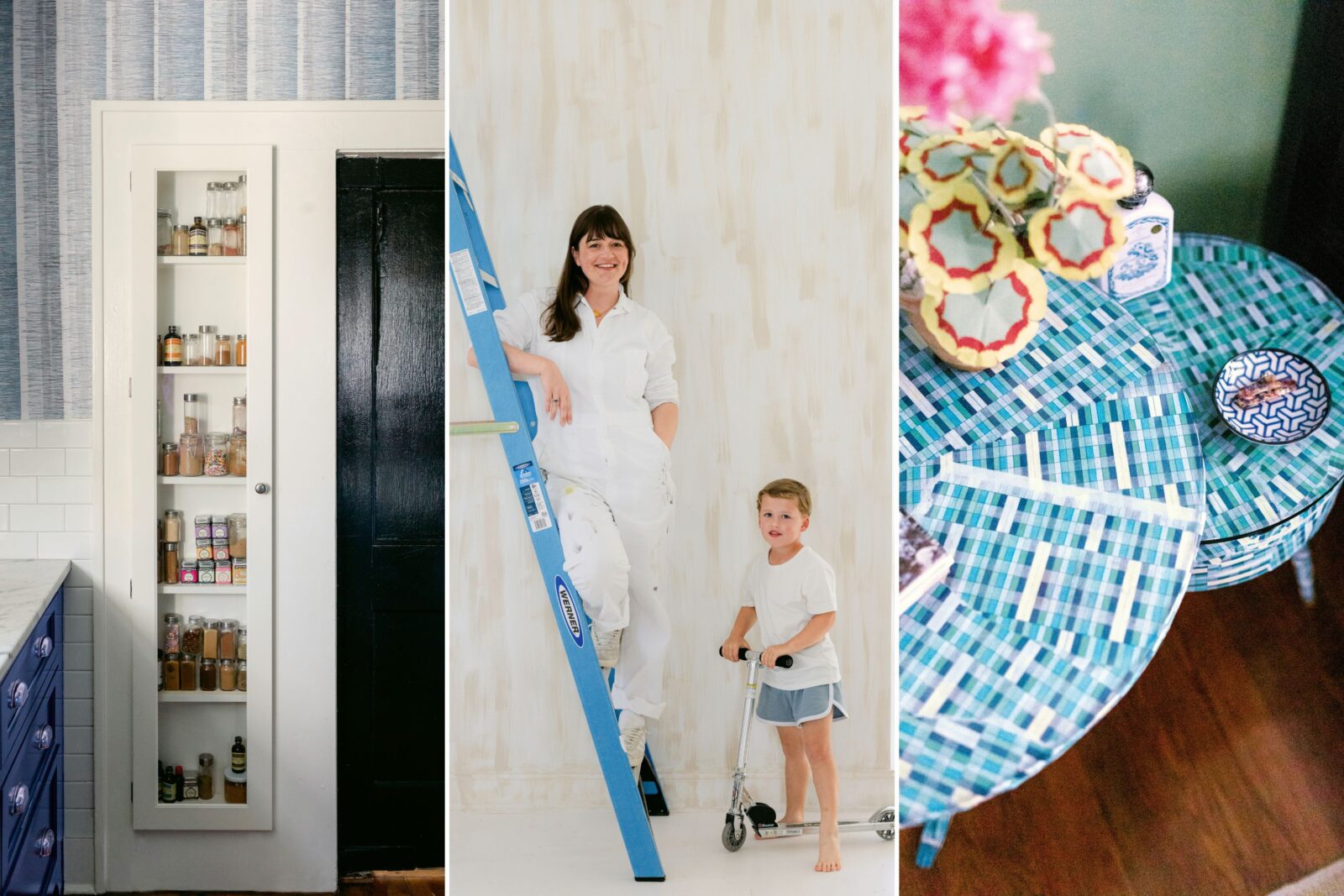
Photo: Charlotte Zacharkiw
Harris converted an ironing board niche to a kitchen spice cabinet; Harris and Wiley at work in her new home; Harris decoupaged the end tables in her former primary bedroom with fine art paper.
One silver lining to a move, though, is a fresh canvas for creativity. This time, Harris faced a new challenge: “My new house is the first new house that I’ve lived in in my life. But I saw immediately that there were a couple of really simple things I could do that would add a lot of character and charm and age to it pretty quickly.”
The first: painting the floors white. Her family and friends doubted her, but now, “they’re like, ‘Oh my God, this looks like a completely different house,’” she says. “In an old beach house, you see painted floors, and in farmhouses—places they really weren’t trying to show off the finery of having stained wood grain floors. A lot of people told me they would not wear well and that they would show everything, but it’s actually been the opposite. The more they wear, the more they make this house look like it’s been here a really long time.”
Second, she painted all the doors a dark color. “It highlights the architecture, which gives a house a sense of age,” she says. “When everything is your standard builder-special color, it doesn’t jump out.” She gives other such tips in the book, but here’s another: “I just always go in with real stuff—real wood, real stone, nothing engineered. With newer houses, so much is engineered that the more real things you can add back in, the more authentic it looks. It gives it substance.”
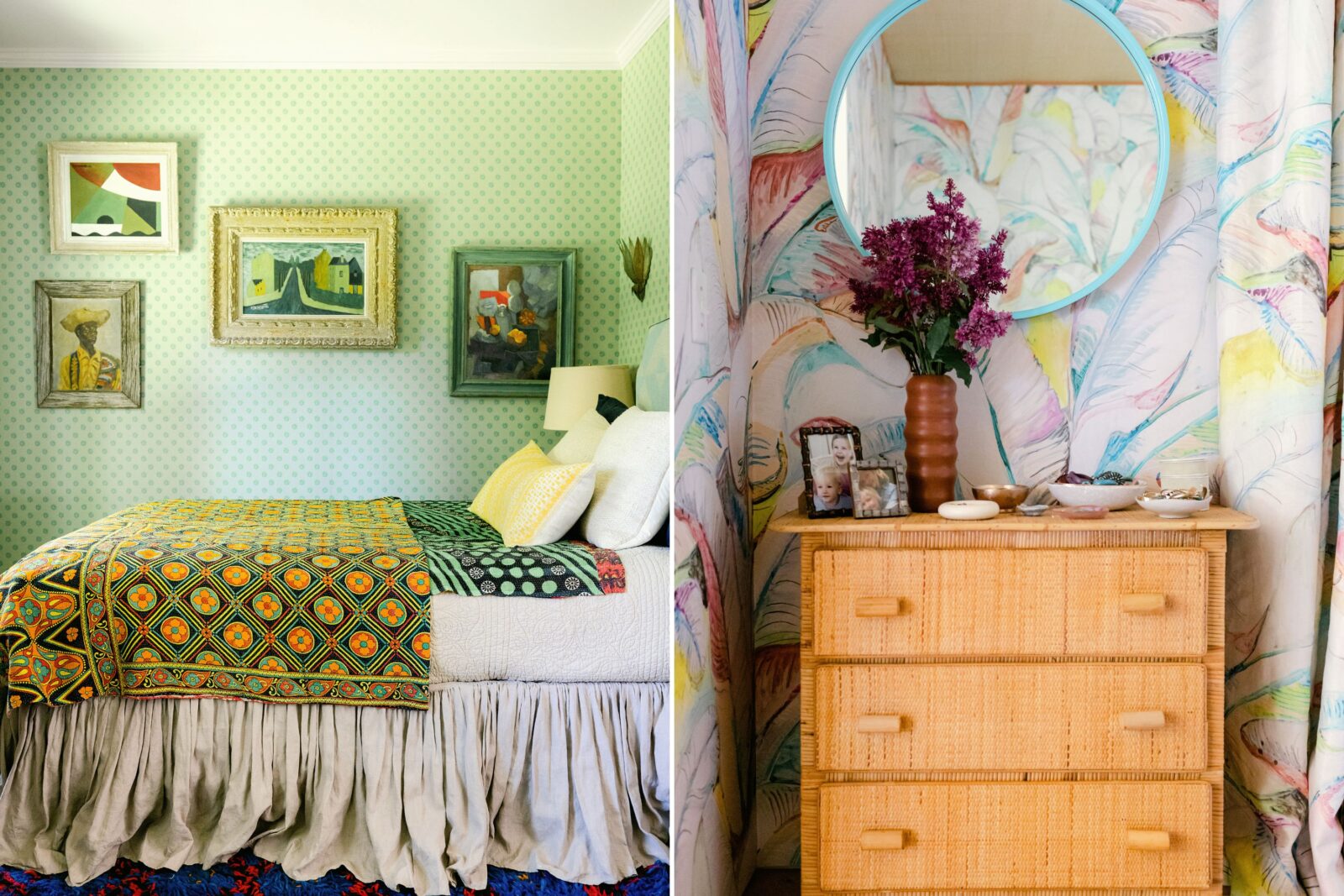
Photo: Charlotte Zacharkiw
Sheila Bridges incorporated antique reproduction wallpaper into her guest bedroom in Livingston, New York; the dressing area in Angie Hranowsky’s Charleston bedroom.
The House Romantic also highlights outdoor spaces, including the artist Susan Hable’s garden in Athens, Georgia, and Charlotte, North Carolina, interior designer Barrie Benson’s Chautauqua, New York, spread. “For most people who really love houses on an emotional level, they also have the same sorts of sentiments for gardens,” Harris says. “They view a garden as an additional room or rooms, and a place to play with a palette and textures, and to be creative and make mistakes. As much as it’s healing to feed all of your senses inside a house, it’s just like that outside—it is another sanctuary, another place to come home to.”

Photo: Charlotte Zacharkiw
An “outdoor room” on the porch of Barrie Benson’s summer house in Chautauqua, New York; a view of artist Susan Hable’s Athens, Georgia, studio from the top of her garden.
At her new house, creating that sanctuary includes establishing a hedge with different shades of thyme and climbing roses and jasmine. To see those projects flower to fruition is “going to take forever,” she says. “But so does a house. It takes a while to get all the layers. In my former house, it took me eight years of doing this project, and then this project. There is something to be said for really observing how people live in a space as you’re designing it. You can get that ‘base layer’ down. But for all the little nuances, living in a space, listening to it, can be really, really valuable.”
Until then, “I wanted Wiley to know that wherever you are, you can make it—we call it ‘comfy-cozy’—you can make it comfy-cozy. You can make it yours. And you can keep dreaming about the next one and remember the ones that came before.”
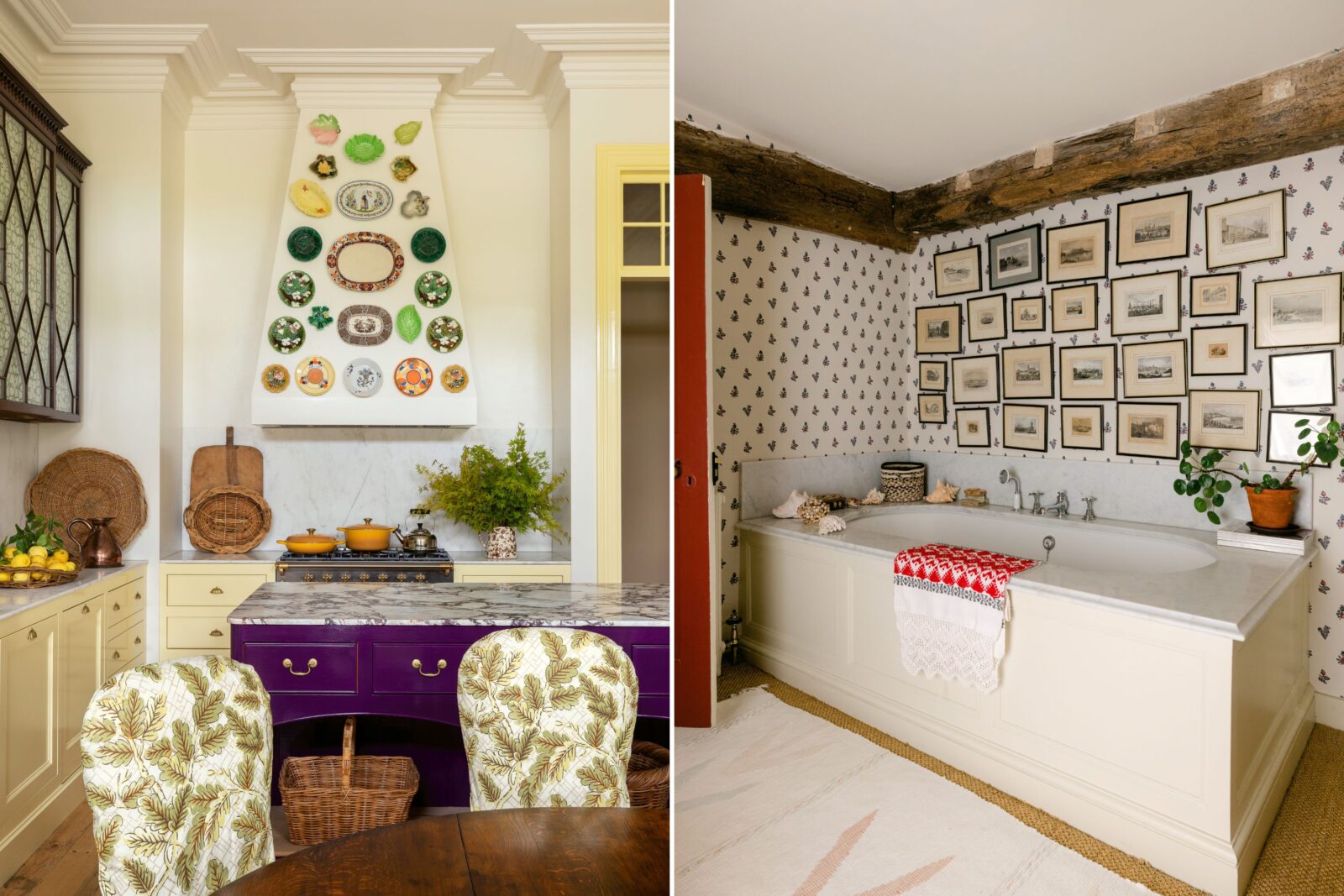
Photo: Martina Gemmola (1); Charlotte Zacharkiw(2)
Anna Spiro’s kitchen in Elsternwick, Australia; decorative painter Amy FitzGeorge-Balfour’s soaking tub in Fletching, England.
Garden & Gun has an affiliate partnership with bookshop.org and may receive a portion of sales when a reader clicks to buy a book.


